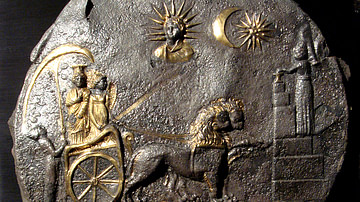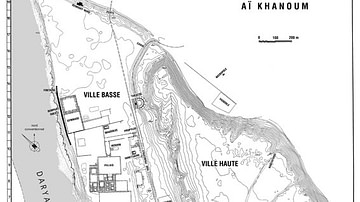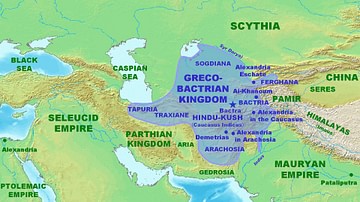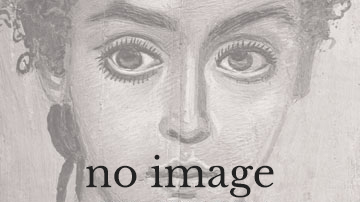Search
Remove Ads
Advertisement
Summary 
Loading AI-generated summary based on World History Encyclopedia articles ...
Search Results

Definition
Eucratid
The Eucratids were a Greco-Bactrian and Indo-Greek dynasty of approximately 12 kings, lasting between c.171 BC and 80-70 BC, according to numismatic evidence. The numismatic emblem which characterized it were the palm and the Dioscuri (Castor...

Article
Ai Khanum, the Capital of Eucratides
Ai Khanum (also spelled Ai-Khanoum or Ay-Khanum, lit. “Lady Moon” in Uzbek), was founded in the 4th century BC, following the conquests of Alexander the Great and was one of the primary cities of the Greco-Bactrian kingdom. The site is located...

Definition
Indo-Greek
The first Indo-Greek kingdom appeared circa 190 BCE may when the Greco-Bactrian king or (general for his father) Demetrios was busy in India, when his Indian possessions were divided between several kings, probably firstly in order to better...

Definition
Greco-Bactrian Kingdom
The Greco-Bactrian kingdom refers to several dynasties and probably kingdoms of Greco-Macedonian monarchs who ruled over Bactria from 250 to 130 BCE. Foundation The Greco-Bactrian kingdom appeared in 250 BCE, when the satrap Diodotos...

Image
Cybele Plate
Plate found at Ai Khanum in northern Afghanistan, in a temple, depicting Cybele, a votive sacrifice and the sun God. 2nd century BCE. (Museé Guimet, Paris)

Image
Plan of Ai Khanum
Plan of Ai Khanum as it was excavated by the D.A.F.A until 1978

Definition
Euthydemid
The Euthydemids were a Greco-Bactrian and Indo-Greek dynasty of approximately 25 kings, named after its founder Euthydemos. The dynasty lasted between circa 230 BC and 10 BC, according to numismatic evidence. The numismatic emblems which...